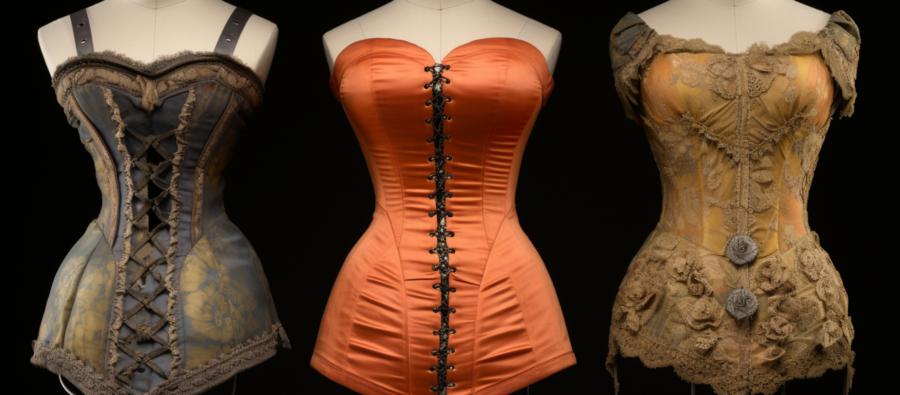The Origins of the Bra: a deep dive into the history of bras
Oh, the bra. Sometimes loved, sometimes hated, but seemingly having always been there in some shape or form. The invention of bras may have revolutionized women's undergarments and challenged societal norms surrounding femininity and women's bodies - but where did they come from? In this blog post, we delve into the fascinating history of how bras were first invented. From ancient civilizations to the modern bra industry, we explore the social, cultural, and feminist contexts that shaped the evolution of bras. Discover how bras have empowered women, challenged traditional gender roles, and become symbols of liberation and self-expression.
From Ancient Greece to the Corsets

The origins of bras can be traced back to ancient civilizations, where women used various forms of breast support, such as bandeau-like garments or binding materials. However, it was during the Victorian era that corsets became popular, emphasizing an exaggerated hourglass figure. While corsets were restrictive and aimed at conforming to societal beauty standards, they marked the beginning of a shift toward undergarments designed specifically for breasts.
The Brassiere Revolution

After decades of being constricted, the early 20th century witnessed a significant shift in undergarment design, with feminist movements playing a crucial role in challenging societal expectations and redefining women's roles. In 1913, Mary Phelps Jacob patented the "backless brassiere," which marked a departure from the constricting corsets. The brassiere, or bra, became a symbol of liberation from the full torso corset, allowing women greater freedom of movement and comfort while challenging traditional notions of femininity and body image.
The 1960s Feminist Movement

During the 1960s feminist movement, the bra became a potent symbol of women's liberation and defiance against patriarchal norms. Women burned their bras in protest, symbolizing a rejection of restrictive gender roles and the objectification of women's bodies. While the act of burning bras was highly symbolic, it represented a larger movement advocating for women's rights and equality in various spheres of life.
The Modern Bra

In recent decades, the bra industry has made some strides toward inclusivity and body positivity, although the actual garment itself has undergone minimal changes. Brands have recognized the importance of catering to diverse body shapes and sizes, and have expanded their narrow size ranges to offer a wider range of bra styles and sizes although still with a minimum and a maximum. This shift follows changing consumer needs, with a rejection of a single ideal body type as well as an understanding that women’s bodies and roles have changed over the last century.
The Future of Bras

As women gain more power in the world, it calls into question what we buy, how we buy, and from whom we buy. Everyone is looking for more convenience and personalization. Intersectional feminism also brings to light and addresses the experiences and struggles faced by women of diverse backgrounds, including those with different body types, skin tones, and cultural identities. The future of bras therefore must lie in creating a more inclusive industry that celebrates and represents the experiences of all women, while recognizing the changing role of women in the 21st century. Additionally, sustainability is gaining prominence, with a focus on eco-friendly materials, ethical production practices, and reducing waste in the fashion industry. Sustainable and ethically made bras align with feminist principles of empowerment, advocating for a more responsible and conscious approach to fashion consumption.
Our belief that the future of bras involves leveraging technology to deliver a convenient, hassle-free and perfect fit. That’s why we use 3D measurement technology and AI to create a made-to-measure bra that you can order from the comfort of your home. Learn more here.


